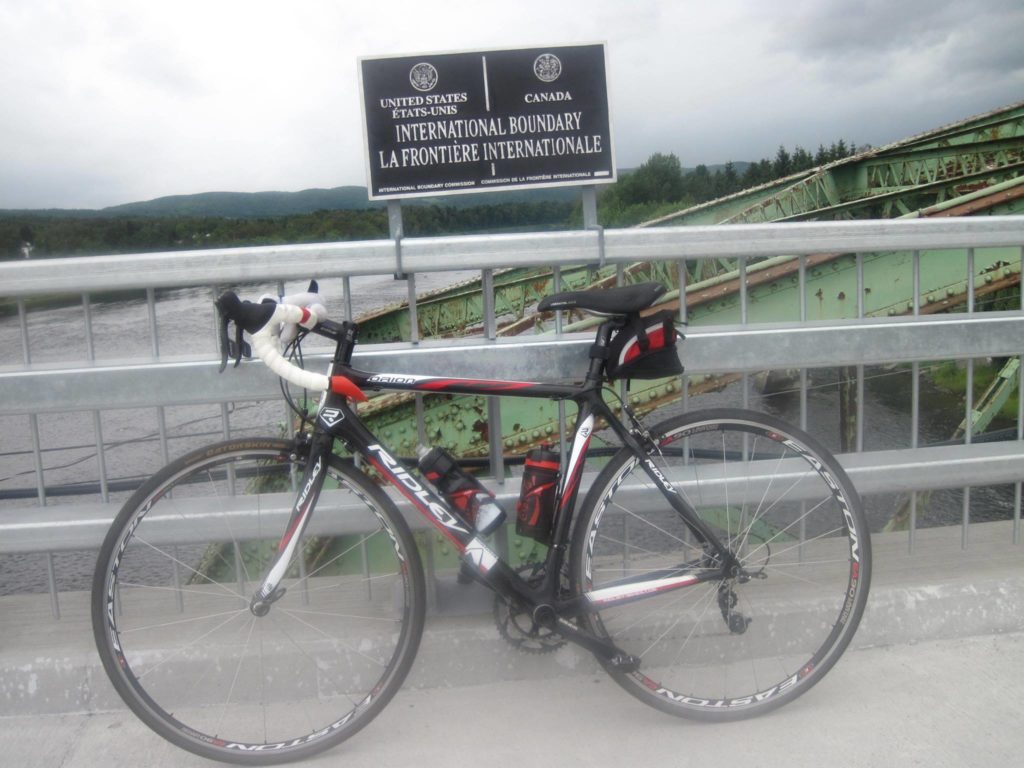It’s an international life here on Rusty Metal Farm

After living in far northern Maine for close to four decades, it’s easy for me to forget that life in a border town is a very novel concept for a lot of people.
To paraphrase a certain former United States vice-presidential candidate, I can see Canada from the highest point on Rusty Metal Farm.
I live in the part of Maine known as the St. John Valley. An area with strong ties to the French-Canadian culture just over the St. John River in New Brunswick and Quebec. French is still spoken regularly in this part of Maine and for many older residents, it was their first language.
When friends and family “from away” come to visit, among the first things they want to do is cross the bridge from Fort Kent into Clair, New Brunswick just for the simple pleasure of entering a foreign country.
And I am more than happy to grab my passport and accommodate that request.
Several years ago some bicycling friends came to ride up here and I was able to map out a route that took us through one state — Maine, two provinces — New Brunswick and Quebec, and two countries — the US and Canada. All within a 35-mile loop.
And there are so many great anecdotal border stories and folklore, surrounding life on the border starting with the creation of the official boundary in 1842 with the signing of the Webster-Ashburton Treaty.
According to local legend, the St. John River was the intended dividing line between the US and Canada. But before the boundary survey party was to map the border, some folks in the US got them good and liquored up.
They were then able to convince the survey crew that the St. Francis River — a tributary of the St. John River — was the St. John. By doing so, it added a massive portion of land to what is now Maine.
One of my former university professors grew up on that border between northwestern Maine and Quebec. Literally.
When the Webster-Ashburton treaty was signed, his family’s farm was suddenly smack on the boundary. The kitchen in one country and the living room in the other.
According to his family’s history, my professor’s father put all of his children through college by selling Canadian tobacco to Americans out of one side of the house and US dairy products to Canadians out of the other.
There is a somewhat similar situation today with the Aroostook Valley Country Club in Fort Fairfield.
The golf course — except for part of the tee area for the ninth hole, and possibly part of a sand trap on the first hole — and clubhouse are on the Canadian side of the border and its parking lot and pro shop are on the American side.
Since the only entry to the course is on the American side of the border, American golfers can use the entire club without reporting to a Port of Entry. Canadian golfers use a small local road to cross the border and access the country club via a seasonal Port of Entry.
There’s a lot of open space and unsecured land between the two countries, which means ample opportunities to cross back and forth without passing through and official border station.
Over the years everything from bootleg liquor to grocery items have been smuggled back and forth. Up here we joke that smuggling was the precursor to free trade.
One story tells of a Canadian woman in the mid 1900s who purchased her wedding dress on the Maine side and, not wanting to pay the duty on it when she passed back into her country, hid it under the hood of her car, on top of the motor.
Her scheme might have worked, had the heat of the car’s engine not set the dress on fire.
One of my favorite cross-border stories was told to me by my late husband who grew up on the banks of the St. John River in Fort Kent.
When he was a small boy in the 1950s, the circus came to town complete with the Big Top and animals. One year the elephant managed to get loose and walked across the river into Canada.
Patrick remembers watching the animal’s handler wrangle the massive critter and then walk it back into the US over the international bridge.
These days, hundreds of people cross back and forth between Fort Kent and Clair every day. If you want to know the status of the US dollar versus the Canadian dollar, just count the license plates in the local grocery store parking lots.
The more plates from one country over the other, the better that country’s dollar is doing.
All in all, it makes life on Rusty Metal Farm feel ever so international. And that’s a novelty that never wears off.
